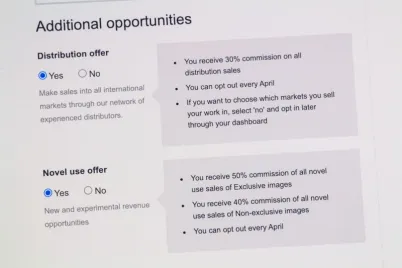I collected the questions of photographers who have no experience with Alamy, but want to be successful selling their images.

What is Alamy?
Alamy is a British stock photography company that falls into the macrostock/midstock category, which means that on average, each stock photo is sold for a double-digit price (in dollars) on their page (as opposed to microstock prices of a few (ten) cents).
Their business model is also radically different. There is no subscription (that is you download as many images as you want for a given amount), but each image (more precisely, its license) is sold under a separate agreement.
The share of the photographer is also higher compared to the microstock. You currently receive 40%. Anyone who is used to microstock sites may find it strange that, in the beginning, it can take up to 1 year on Alamy without sales. I reassure you that this is completely normal. There are several reasons for this: All in all, it takes two to three years to have regular sales, provided you consistently upload photos and use the right, relevant title (caption) and keywords for each image. The number of sales varies greatly, depending on the size of the portfolio and, above all, how well you manage to meet the needs of your customers. Some people earn good money with only 3,000 photos, but there are contributors who suffer with tens of thousands of photos. So you can produce sales, even hundreds of dollars per image. In addition to the previous question, it is important to know the following as well. There is no doubt that anyone who lives and takes photos in the UK can sell more pictures, simply because Alamy is a UK-based agency, and also they have contract with plenty of British newspapers, so many news photos are provided by Alamy photographers. It is also true, that the company operates a worldwide network and already has headquarters in India and the USA. So customers from all over the world are searching the Alamy database. My own experience is that you can produce sales asa non-UK photograper. And with hard work, more and more! A lot and a little. There are photographers with large portfolios (50,000+ images) who can hit up to $25,000 a year (this is the gross amount, you get 50% or 40% of that). The amount you can earn with a portfolio of a few thousand images is very variable. If you use the knowledge gathered on the Alamy forum, you could have a gross salary of around $1,000 per month. Alamy sales are quite rhapsodic, both in price and quantity, but a few years of persistent uploading results in relatively regular sales. The more diverse your portfolio is, the more chances you have, although there are photographers who specialise in certain areas (e.g. marine life, airplanes, plants, etc.). If you have thousands of photos on a topic that more or less covers that area, you also have a good chance to be successful. If you have high-quality, consciously taken photos, DSLR (SLR), or equivalent (so you have to forget mobile photos!), feel free to register at the Alamy website. English language is a prerequisite, as it not only comes in handy when registering, but is also essential when keywording your photos or reading the forum. Alamy's interface is in English only. Fill in the registration form with your details. At the bottom of the page you will find two options that are worth mentioning. Distribution offer: Alamy has plenty of distributors, through whom your images can reach many countries around the world. However, they also take off their stakes, which varies in percentage. The price available for images also varies, which is low for Eastern European countries (below $10), but through Western European and Japanese distributors, they pay up to $100 per image. Each year, you can only opt out of the distributor sales in April but opt in at any time through the year. Novel use offer: new or experimental sales areas. There are usually no such sales, but if there are, at a very low price. Therefore, no photographer recommends using this option. Opt-in or opt-out is also only possible in April. After submitting the registration form, you will have to wait for the decision that your application has been accepted or rejected. If rejected, they will explain why, and you can try again with different or corrected photos. The answer often only arrives in weeks, depending on the workload of Alamy’s staff. |1| You must first register on the site. It starts with uploading three test images, which are analyzed only from a technical point of view (lens dirt, image noise, sharpness, white balance), the subject and content of the photo are up to you (provided it is not inciting, racist or such). The huge advantage of Alamy is that you can upload images on any topic and content, and any text, people, buildings can be in your photos. Uploading images begins by clicking the Upload button at the top of the Alamy Image Manager page. Then you have to choose the type of the image (usually photograph). Finally, you can upload your photos from your computer with batches of 10-20-30. If you want to upload more at once, You can do this using an FTP client. |2| Because Alamy QC (Quality Control) only randomly checks images in one batch (submission), and if an image is not accepted, all batches are discarded, it is a good idea to upload in smaller batches and wait for the acceptance email to arrive. In short: you cannot. You can buy but not sell, as you need to have a registered account with Alamy where you can upload your pictures. After uploading the first 3 images, it may take up to some weeks for the answer to arrive. If you have successfully registered, the review will be faster, which is 2-3 days if you have three stars (every new photographer starts with 3 stars). However, if you have a lot of rejected images, you can have only 2 or even 1 star when you have to wait up to 1 month. If you have a small number or no rejected images for years, you will be promoted to the 4 and finally 5 star group. A 5 star contributor may have his/her photos up almost immediately, without any quality control. You can find the number of your stars on the Dashboard at the top of the page. The exact criteria are unknown, but a consistent high standard is certainly needed. |3| A pseudonym, is a name chosen by a photographer under which his or her portfolio runs. So this name is also visible to buyers. In fact, your real name is only visible in your Alamy account, in your personal information, and only your pseudonym will appear to the public. Of course, this can be the same as your real name, but it can also be anything else (it can even consist of several words). And here comes Alamy’s unique solution: you can organise your portfolio under even more pseudonyms! This can benefit you in several ways: Your customers may benefit from looking at the “Stock photos by the same contributor” block to see your images of similar topic, not a mixed set of images. Of course, this can be a disadvantage, too, because they don’t see how great your images are in other topics! As for Pseudonym, the community of Alamy photographers is quite divided. Some have kept their photos under only one pseudonym for years (decades), but there are those who use dozens of pseudonyms, sorting their images for each from different perspectives. The {CTR} (Click Through Rate) indicator plays a big role in determining a photo's position on search pages. At least both Alamy and the photographers claim that. If this is the case, then arranging a portfolio under different Pseudonyms makes sense. This is because each Pseudonym achieves a different CTR value due to the good / poor performing images associated with it (the CTR value is assigned to the Pseudonyms, not to each image). Some claim that after rearranging (from one to more Pseudonyms), the number of {Zooms} has increased, which is a measure of CTR. If you have a portfolio of tens of thousands, it may be a good idea to use multiple Pseudonyms, just for the sake of organising. You can create new Pseudonyms at any time, but you can no longer modify them. If deleted, the history statistics for the Pseudonym will be lost. |4| If you have already signed up to Alamy, you can enter the Alamy Image Manager interface. There you will find your uploaded pictures or you can upload them there. When you click on an image, a "Discoverability bar" appears at the top of the right column, which is red if you haven't entered any data yet (keywords, title, etc.), orange if you've entered little data, and green if you've entered the right amount of data. So in principle, it indicates how easy / difficult it is for your customers to discover your particular image. The bar turns green if you have entered a title (caption), at least 40 keywords (tags), and 10 supertags (main keywords). There is a consensus among experienced contributors of the Alamy forum that it is better to ignore the discoverability bar. This is because you do more harm if you enter 45 keywords, 10 of which are directly related to your image, the rest are just "stuffing" or spamming. If an image appears frequently in searches where the keyword entered is irrelevant, the CTR (Click Through Rate) will decrease, causing your image to be ranked lower on search results pages. Alamy's method is significantly different from the strict (Shutterstock, Adobe Stock) or the automated (Dreamstime) control processes used on stock photo sites. Here, the images are examined only on a random basis and only from a technical point of view (the content aspect is only the exclusion of the usual racist, inciting, etc. images). To do this, the images are chacked to 100% size, i.e. they are viewed at full (actual) size (1: 1 magnification). So it is recommended that you also view your photos at 100% magnification (your image editor must have this feature). If the image is not sharp enough, you notice image noise, you'd better not upload that image because chances are it will be rejected. |6| The basic rule is that photos to be uploaded to Alamy should not be sharpened during post-processing. This is somewhat contradicted by the fact that experienced photographers tend to use slight sharpening, but only where necessary. If the sharpening causes your image to be grainy or blurry, meaning the sharpening is very noticeable, then not only you, but the QC team will notice it. I suggest that the default should be 0 sharpening, and if one of your images is a bit hazy at 100% magnification, then max. amount of 30 sharpening should be used. Just carefully! |7| No. Alamy is firmly in favour of letting customers decide if they want to use your photo in colour, or black and white. If they choose the latter, they can edit the image themselves. However, if they buy a black and white photo, they can no longer make it colourful. |8| It is free. There is no cost at all, if you are a contributor to Alamy. Costs may only arise if you are an image buyer.
More on commissions you will find in the Alamy Terms and Conditions.
Is it possible to sell photos on Alamy at all?
What is the probability to sell photos on Alamy?
How much money can you make on Alamy?
How can I be an Alamy contributor?
How to upload photos to Alamy's website?
How can I sell photos on Alamy without registering on the site?
How long does Quality Control take on Alamy?
What is a Pseudonym and it is worth using more?
How to make the "discoverability bar" green (optimized) on the Alamy Image Manager page?
|5|
What does "photos are checked at 100%" means?
Why can't I apply post-sharpening to my photos?
Is it worth uploading black and white photos?
How much does it cost to sell photos on Alamy?












